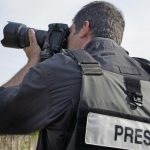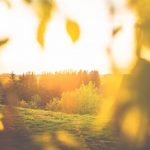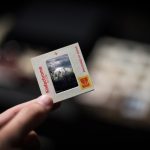Month: March 2017
Controversial Photography Is Sometimes a Necessary Evil

Last month, the Word Press Photo of the Year was engulfed in controversy surrounding the selection of the winning entry. Voters were torn between advocating for an image that they believed gave publicity to martyrdom, whereas those who voted for the picture were taken aback by its impact and the photographer’s poise under significant duress. If you’re not familiar with the photo in question, Turkish photographer Burhan Ozbilici was on hand to witness and capture the assassination of Russia’s ambassador to Turkey by a local off-duty police officer. Photos depicting assassinations are nothing new to the World Press Photo Awards. In fact, several similar pictures previously featuring in the competition have taken out the top prize. While there is nothing comforting about the photo – which depicts the abhorrent actions some will undertake to further their own beliefs and causes – there are several aspects to consider beyond… | Read the full article
Shooting in Black and White

While at times some might question the purpose of black and white shots when one has a full colour spectrum to utilise, there can be no denying the impact that can be created when shooting in this style. In part this can be attributed to the finer details of a photo that are allowed to shine through. In broader consideration however, removing colour is better means to draw attention to focal points. You can take note of these key aspects to make the most of your black and white photography. Select your shots carefully Just like certain settings or lighting conditions favour some type of work, it’s important to ensure your work fits in with a black and white style. The biggest attribute of monochromatic photos is the texture and shape they take on from their appearance. This won’t be appropriate in every situation, particularly instances where you… | Read the full article
Natural Lighting vs Artificial Lighting

It’s an inevitable decision for just about every photographer at some point, particularly portrait photographers – should they use natural lighting, or artificial lighting? Of course, this is often a personal decision and one that photographers would choose for a variety of reasons depending on their circumstances. With that said, what exactly are the differences when shooting with the two different sources of lighting? Natural lighting that offered by way of the sun and the moon, is a readily available, free and accessible source for photographers to work with. There is no requirement to purchase significant gear or equipment. The exception to this might be diffusers and reflectors, which are designed to distort or enhance natural lighting – these are considerably cheaper than actual sources of lighting like strobes, LEDs and the like. Using natural light is also a great starting point for photographers looking to gauge and comprehend… | Read the full article
The Magnetism of Film

Despite being down and out for the best part of more than a decade, film photography and its ardent supporters refuse to roll over and let the format become a footnote in the chapters of history. In fact, we’ve seen a resurgence from the format in recent times, despite the fact film accounts for only a fraction of the market it once occupied. Even some of the industry’s heavyweights have moved to back film again, with the likes of Kodak announcing a return for film to its line-up. Whereas once upon a time film was born out of necessity rather than choice, an emerging trend has been for younger photographers, who never had exposure to the format, to experiment with it and the associated manual processes as a way to adjust their style and spark their creativity. Therefore, with effectively a new target audience, film is finding a foothold… | Read the full article
